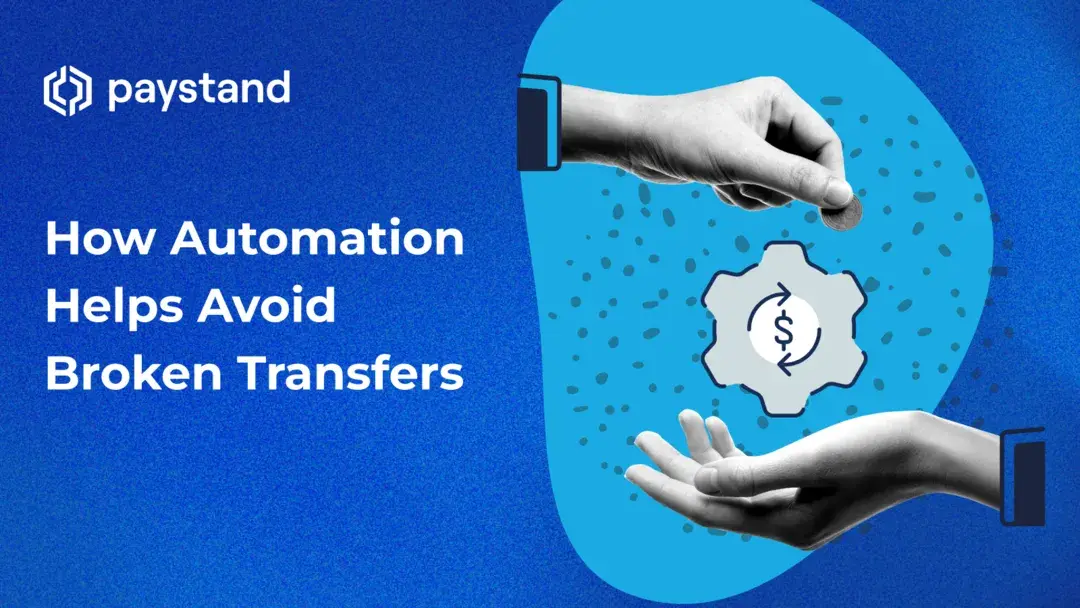How Automation Helps Avoid Broken Transfers

In the fast-paced world of B2B, an efficient accounts receivable process is vital for smooth operations. One common challenge that can disrupt the entire staff is broken transfers. While seemingly insignificant, these disruptions can significantly impact the AR process, leading to a lengthened cash cycle and increased DSO.
The accounts receivable (AR) process in B2B companies must run like a perfectly synchronized machine. Any anomaly in the process can create problems for the entire staff. One of the most common problems is broken transfers.
Broken transfers seem like a minor problem because the cause is simple. However, they can slow the AR process, lengthening the cash cycle and increasing DSO. Also, accounting teams waste time and effort trying to fix human errors that can be easily avoided.
One of the best and most efficient ways to avoid struggling with broken transfers is automation. It minimizes human error and frees staff to carry out tasks of greater complexity, like planning and strategy.
In this article, we will explore the issue of broken transfers and how automation helps to avoid them. Read on to discover this and more benefits of this technology in accounts receivable.
What is a Broken Transfer?
One of the stages of the cash cycle is reconciliation. The AR team must ensure that the internal books match the bank receipts during this stage. Previously this process was done manually. Depending on the company's size, one or more people compared each bank receipt with the income recorded in the accounting books.
Technology has allowed the digitization of these processes, primarily through ERPs such as NetSuite or Sage Intacct. This process is carried out instantly when integrating with a payment gateway.
Each activity performed within the payment gateway, such as a whole or partial payment or a sales order, is called a transaction. When the transaction is done through the platform, the transaction information is automatically reconciled. The system compares the invoices against what is being paid and makes the match, facilitating the tasks of the accounting team.
But sometimes, this reconciliation does not occur due to different factors. When this happens, the information doesn't synchronize with the ERP, so the record is incomplete, causing an anomaly in the ledgers. This anomaly is called a broken transfer.
How do Broken Transfers Affect the AR Process?
If the broken transfers are not solved, the balances do not add up, so some payments may be delayed. When the balances do not balance, the system recognizes that there is a sum of money whose origin is unknown.
At the end of the month, all accounting teams must account for and state where each amount of money recorded in the ledgers came from. Failure to prove the source of the funds against the records can lead to a problem with the IRS.
Also, the system only makes money available once the balances equal zero. Delaying the availability of cash can make the difference between business success and failure. Not having enough money means being unable to pay suppliers, delayed payroll, and a hit to profits.
In addition, discrepancies in accounting records must be tracked manually. This takes time away from accounting teams, slows the cash cycle, and increases the company's DSO.
How does Automation Prevents Broken Transfers?
One of the main advantages of automating accounts receivable processes is immediacy. One of the processes that benefit from this is reconciliation.
We mentioned how reconciliation was done manually in the past, and each invoice had to be checked against the bank receipt for payment. Reviewing each invoice and payment could take hours. Considering B2B companies' payment volume, this task could take days.
Automation completely changes the reconciliation paradigm. It is no longer a time-consuming process that takes time and effort away from people. Thanks to platforms like Paystand, the process is done immediately and automatically. Invoices and bank receipts are matched in real time without going to records for review.
Automating reconciliation and most AR processes frees staff's time, giving them the flexibility to focus on more purposeful and rewarding projects.
Paystand, your Best Ally for Automating Reconciliation
On automating reconciliation and AR, Paystand is the best ally for accounting teams in B2B companies. It integrates with the leading ERP systems in the market, such as NetSuite and Sage Intacct, and has robust APIs. These integrations allow instant reconciliation of payments, accelerating the cash cycle and reducing DSO.
Paystand's ready-made payment tools and SaaS platform save your business valuable time and money by:
- Eliminating manual processes and avoiding chasing down payments.
- Increasing payment remittance with our Billing Payment Portal.
- Consolidating your payments to accept all forms of payment quickly and efficiently.
Reduce spend and increase customer retention by moving away from manual workflows, inefficient operations, and non-digital payment options. Don’t stop just at reconciliation.
Download our guide to 5 Strategies for Effective Accounts Receivable Management and convince yourself that Paystand is the best option to automate your business’ accounts receivable.




